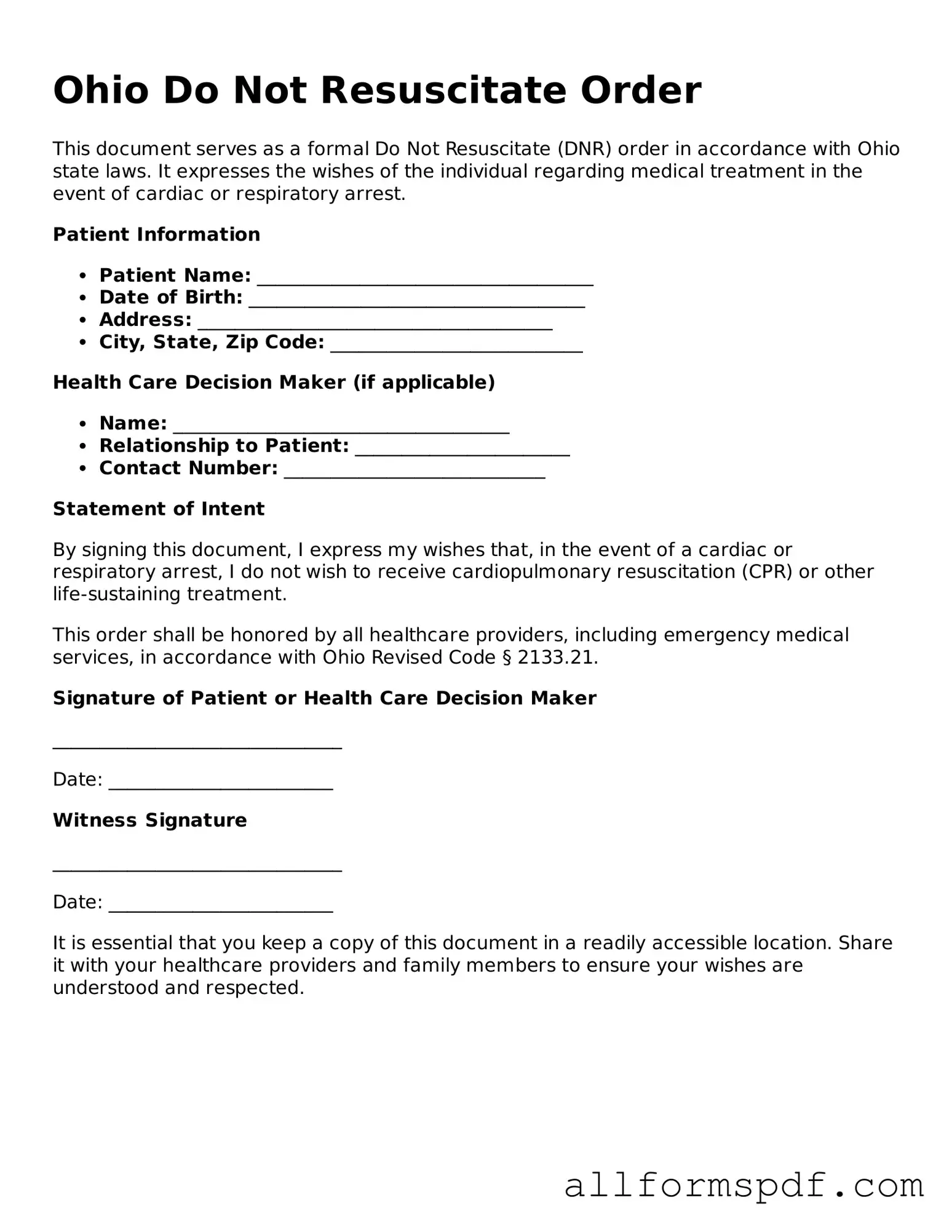Filling out the Ohio Do Not Resuscitate (DNR) Order form is an important step for individuals who wish to communicate their end-of-life preferences. However, many people make common mistakes that can lead to confusion or unintended consequences. Understanding these pitfalls can help ensure that the form accurately reflects one's wishes.
One frequent error is failing to provide clear identification. The form requires the patient's name, date of birth, and other identifying details. Omitting or incorrectly entering this information can lead to misunderstandings about the patient’s identity. Always double-check these details to avoid any potential issues.
Another mistake is neglecting to have the form signed by the necessary parties. In Ohio, the DNR form must be signed by the patient or their legal representative. Without these signatures, the document may not be considered valid. Ensure that all required signatures are obtained before submitting the form.
Many individuals overlook the importance of witnessing the DNR form. In Ohio, a witness must be present when the patient or their representative signs the document. Failing to have a witness can invalidate the form. It’s crucial to have someone who meets the state’s criteria for a witness to avoid complications.
Some people mistakenly assume that a verbal communication of their wishes is sufficient. While discussions about end-of-life preferences are essential, they do not replace the need for a written DNR order. A signed document is necessary to ensure that medical professionals understand and respect the patient’s wishes.
Another common error is not updating the DNR form when circumstances change. Life situations can evolve, and so can a person’s wishes regarding resuscitation. Regularly review and update the DNR order to ensure it reflects the current preferences of the patient.
Additionally, individuals sometimes fail to distribute copies of the DNR form to relevant parties. It is not enough to simply complete the form; sharing it with healthcare providers, family members, and caregivers is crucial. This ensures that everyone involved in the patient’s care is aware of their wishes.
Misunderstanding the specific instructions on the form can also lead to mistakes. Each section of the DNR order has a purpose, and skipping or misinterpreting any part can result in an incomplete or ineffective document. Take the time to read the instructions carefully to avoid errors.
Finally, some individuals may be unaware of the potential for revocation of the DNR order. It is important to know that a patient can change their mind at any time. If a decision is made to revoke the DNR, ensure that the appropriate steps are taken to communicate this change effectively.
